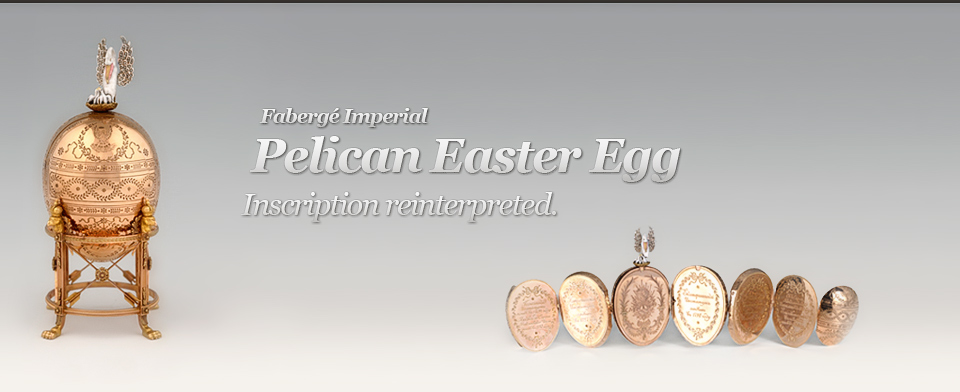Acknowledgements
I would like to thank Tatiana Fabergé for her wonderful criticism and input in the primary edits of the subject, creation, and structure of this body of work, as well as for her guidance for its publication. My sincere gratitude goes to Bernard Ivaldi who made this a reality.
I would also like to thank the Virginia Museum of Fine Arts for the opportunity to work with the Imperial Pelican Egg and for access to their archives for my research. I am immensely grateful to Dr. Mitchell Merling, Paul Mellon Curator/Head of Department of
European Art, Kathy Z.
Gillis, Head of Sculpture and Decorative Arts Conservation, Howell W. Perkins, Manager, Department of Photographic Services, Rights and Reproductions, David Bradley, Deputy Director for VMFA Foundation Administration and Government Relations,
Suzanne Broyles, Secretary of the Museum, Cory Piper, Curatorial Associate for the Mellon Collections, Caryl Burtner, Coordinator of Curatorial Administration, Jessica Ferey, Administrative Assistant, Curatorial and Exhibitions as well as Lee Viverette, Director of Library,
Museum and Statewide Resources, Rare Book Librarian, Margaret R. and Robert M Freeman Library, and Michelle Hevron, Fine Art Research Assistant, Margaret R. and Robert M.
Freeman Library for the their guidance and assistance as I navigated the intellectual breadth of the project at the museum.
I would also like to thank the editors and co-editor of the Fabergé Newsletter website, Christel Ludewig McCanless and Annemeik Wintraecken for their suggestions in shaping this article. Mary and Robert Pringle, Valentin V. Skurlov, my husband Pavel and my daughters Maria and Varvara Degtiarenko also deserve thanks for their contributions to the long editing process.
Finally, I would like to express my admiration of Lillian Pratt and her noble intent to acquire objects of Imperial Russian heritage in an act of appreciation for the educational and charitable activities of the Romanov House
Further research into the Imperial Pelican Egg and the Imperial Red Cross Egg, as well as the scope of Lillian Pratt’s collecting, will bring to light her and her husband’s many humble philanthropic actions; revealing these will provide a valuable contribution to the study of Russian history and broader cultural and social history.
